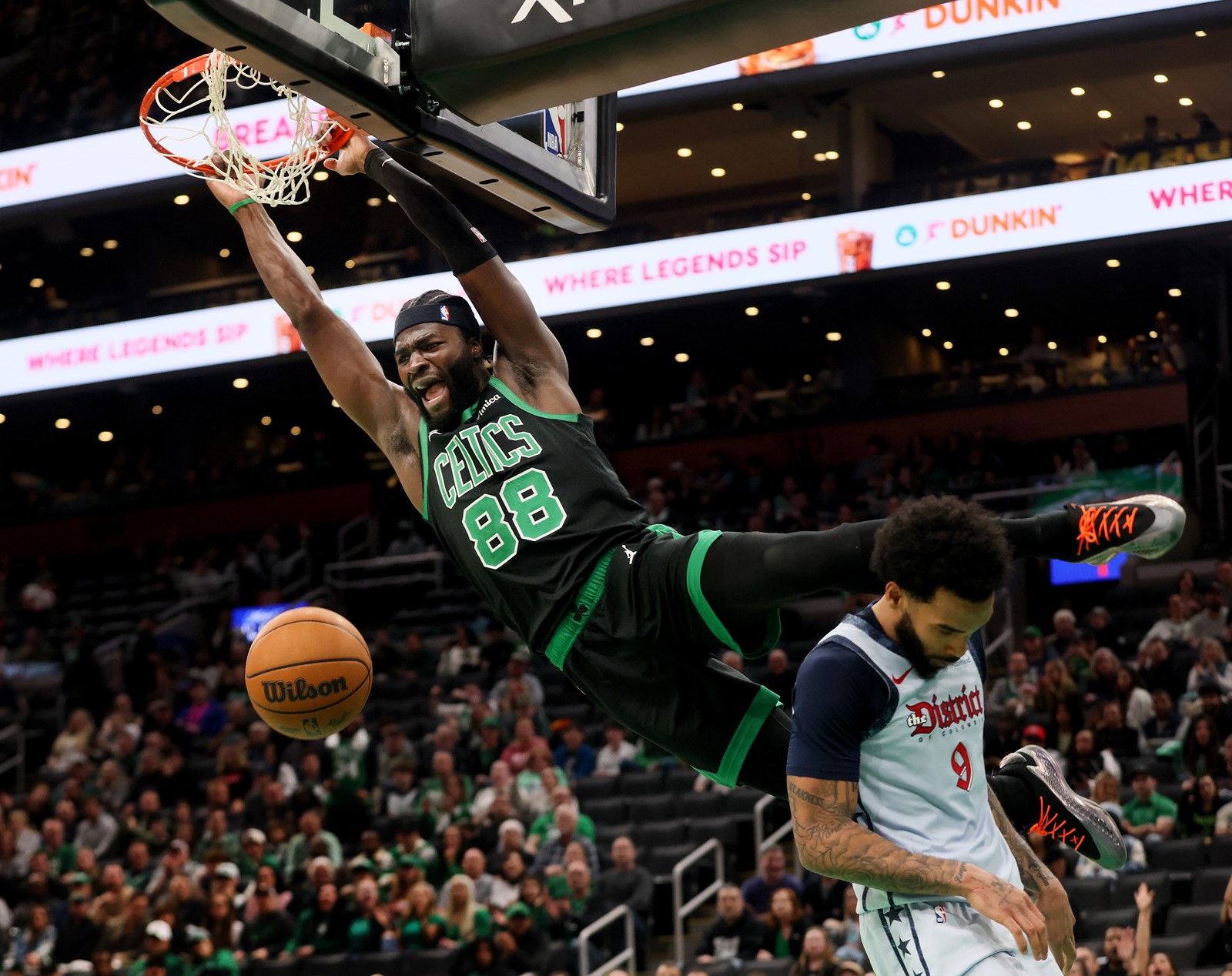
Brad Stevens didn’t sugarcoat it.
Asked last week how the Celtics’ frontcourt will manage without its top three big men, Boston’s president of basketball operations bluntly replied: “We’re going to find out, right?”
In an offseason of change for the Celtics, who dismantled a significant portion their championship-winning roster to avoid the wrath of the NBA’s second apron, no position group has been hit harder than center.
Kristaps Porzingis was traded to Atlanta in a salary dump. Luke Kornet parlayed his career year on a veteran minimum contract into a four-year, $41 million payday from San Antonio. Al Horford has yet to officially join a new team, but Stevens — who said on draft night that the Celtics hoped to re-sign both Kornet and Horford — admitted the 39-year-old locker room leader was “unlikely” to stick around.
Porzingis, Horford and Kornet occupied the top three spots on Boston’s depth chart and were the only Celtics bigs who saw meaningful postseason minutes. With all three now (seemingly) gone, the C’s are left with a collection of bigs that might be the least impressive in the NBA: Neemias Queta, newcomer Luka Garza, Xavier Tillman and second-round draft pick Amari Williams.
The 26-year-old Queta has started six games in his NBA career. Garza, also 26, has started five. Tillman occupied one of the last spots on the Celtics’ bench last season and, at 6-foot-7, is ill-suited for a full-time center role. Williams is, again, a second-round pick who’s more likely to contribute for Maine than Boston as a rookie.
Stevens said the Celtics plan to approach the center position “by committee” this season.
“That group will not be the group that people will single out based on paper, on what they’ve done with their careers thus far, as our strongest position,” he told reporters. “But it’s up to them to prove it otherwise.”
Queta and Garza project as the top two starting candidate, and Stevens believes there’s untapped potential in both players. Queta saw action in a career-high 62 games in 2024-25 — his first season that did not feature any G League stints — and was ahead of Kornet on the depth chart for a stretch early in the season before falling out of head coach Joe Mazzulla’s rotation.
Consistency was an issue for the 7-footer, and he is not a shooting threat. But at his best, he provided a strong mix of shot-blocking, offensive rebounding and at-the-rim finishing
“I think we had an incredible luxury with Luke and Neemi as our third and fourth centers, because I think they were both much better than that,” Stevens told reporters. “I think Luke will have an amazing impact in San Antonio, and I think Neemi has a great chance to be impactful here.”
Garza also has spent his career stuck behind talented bigs. During his three years in Minnesota, he backed up the likes of Rudy Gobert, Karl-Anthony Towns, Julius Randle and Naz Reid.
A former Wooden Award-winning standout at Iowa, the 6-foot-10 Garza appeared in just 39 games last season — a career high for him — and averaged 5.6 minutes per appearance and, like Queta, was not part of his team’s playoff rotation. He posted some impressive offensive metrics in his limited action, however. Per Cleaning the Glass, his minutes saw the largest increases in points per possession and offensive rebounding percentage of any Timberwolves player, and both of those marks ranked in the 88th percentile or better among big men.
Garza also offers more floor-stretching ability than the paint-bound Queta. He’s attempted 5.8 3-pointers per 36 minutes in his career, those he’s made just 31.4% of those.
“We’ve always liked Luka Garza from afar,” Stevens told reporters, “and we think that he has the real physicality that’s necessary on both ends of the floor, especially on the glass in addition to his ability to score.”
Garza said Boston’s lack of star power at his position influenced his decision to sign with the Celtics. He came aboard on a two-year, $5.5 million contract earlier this month.
“Obviously, there’s a lot of opportunity, especially in the frontcourt with the guys that we have,” he told reporters in Las Vegas on Sunday. “The front office and the coaches believe in me and what I can do, so I just saw that as really good for me at this stage of my career. … I feel like I’ve learned so much from my time in Minnesota, from being around those guys, but I think it was time to find that opportunity to get on the floor. I felt like in the limited opportunities I was able to get, I was able to show well and maximize, those, but for me, it was a priority for me to get to somewhere where I could get more of those opportunities.”
Williams, whom Boston drafted 46th overall out of Kentucky last month, stands 7 feet with a 7-foot-6 wingspan and is regarded as an advanced passer for his size. He’s shown off some of that ability with the Celtics’ Summer League team but has had a quiet tournament statistically, averaging 5.5 points, 3.0 rebounds and 1.5 assists over his two appearances.
The more impactful Summer League big man has been Charles Bassey, who joined the team days before its first game and proceeded to deliver back-to-back impressive performances. Bassey, a 24-year-old who spent the last three seasons with San Antonio, notched double-doubles in each of his first two appearances with the Summer C’s, tallying 14 points, 11 rebounds and two blocks against Memphis and 22-13-3 against New York. The Celtics outscored opponents by 35 points with him on the floor over the two games.
Bassey regressed in his third outing (10 points, nine rebounds, minus-15 in a loss to Miami on Monday), and it’s unclear how he’ll fare against more legitimate competition if he earns an invite to training camp. But adding another contender in this wide-open roster battle couldn’t hurt.


 PREVIOUS ARTICLE
PREVIOUS ARTICLE
